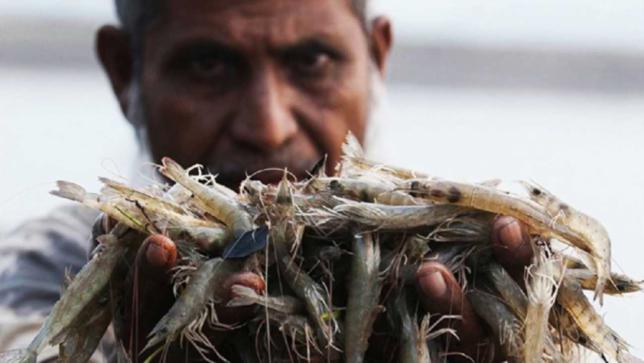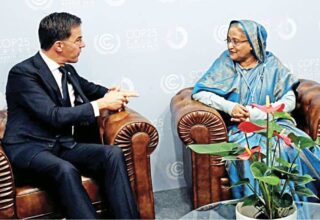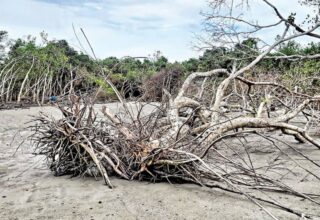
I recently took a group of international young researchers from a number of countries on a field visit from Dhaka to the south coast around Khulna to demonstrate to them how Bangladeshis have adapted over the centuries and more recent decades to changes in the ecosystems in which the people live. However, it came to light that adaptation was not equally successful for everyone. There are losers as well as winners.
In this column I will describe three such adaptations in three ecosystems in Bangladesh, from the central to the southern part of the country.
The first ecosystem is the freshwater floodplains of the major rivers like the Ganges, Brahmaputra and Meghna in the central Bangladesh. These major rivers have made Bangladesh what it is over thousands of years and the people living in the floodplains of these mighty rivers have adapted to their ecosystems over centuries.
The main characteristic of these floodplains is that they flood during the monsoon season when the entire floodplain becomes one sheet of water. These water bodies, locally known as beel, are a common property resource and are teeming with hundreds of species of aquatic life, from fishes to snails, which can be caught by fishers and non-fishers alike during the flood period.
Once the monsoon is over the waters recede and the land emerges. The land is now private property and is then farmed (usually rice or jute) by the landowner. This crop belongs to the landowner. The farmers try to make sure that they can harvest their crops before the next monsoon floods begin getting stronger.
Occasionally, the rivers have unusually strong or untimely floods which do not give sufficient time to the farmers to harvest before the floods in which case the farmers lose their crop.
This pattern of life is what can be described as the age-old, traditional adaptation of people to living in the floodplain of these rivers.
As we go further south from the freshwater floodplains to the district of Bagerhat, we begin to see a change that has occurred over the last few decades, namely the intrusion of saline water from the tidal rivers during a part of the year. This makes the water brackish and no longer suitable for growing rice throughout the year. The initial reason for the intrusion of saline water upstream because of tidal causes was the reduction in low season water flows in the Ganges river, mainly due to upstream withdrawal from the river. However, this salinity intrusion will exacerbate because of sea level rise due to human-induced climate change.
During the last few decades however, the landowners in this brackish water zone have developed, partly on their own and partly with assistance from the government, researchers and NGOs, a way to convert their plots of land to shallow ponds, locally called gher(enclosure), that they could use for aquaculture for part of the year during the monsoon season and also grow a crop of Boro rice during the dry season.
They also discovered that they could grow the giant freshwater prawn (locally known as Golda chingri) which can be sold at an attractive price in the market.
Thus, over the last couple of decades the entire area has transformed from being used to primarily grow rice only to aquaculture/rice, and the income from Golda chingri has made landowners much better off economically than before when they grew only rice throughout the year.
This has led to the district of Bagerhat sometimes being referred to as the “Kuwait of Bangladesh” as they have discovered the “white gold” of Golda chingri.
As we travel further south towards Khulna and Satkhira, the salinity levels get much higher and unsuitable for growing Golda. Here, the main adaptation that has taken place in the last two decades or so is to grow another species of tiger shrimp (locally called Bagda chingri) which can withstand much higher levels of salinity.
However, methods of farming Bagda shrimp are very different from farming Golda shrimp, making the former a more questionable kind of adaptation.
The first difference is in the size of the enclosures needed for growing the two types of shrimp. Golda can be grown in ponds of the size of a farmer’s plot while Bagda needs much bigger plots to maintain flow of saline water. Hence in the areas where Golda is grown, the farm owners can do their own aquaculture while in the Bagda-growing areas the landowners either sell or lease their small plots to an outsider who invests in a large area to grow the Bagda shrimp. Local farmers cannot practice this type of aquaculture by themselves and are often forced to lease out their land.
The second difference is the fact that when Bagda shrimp is grown in an area it makes the entire area saline and often kills all the surrounding vegetation, including even homestead gardens of the people living around the enclosures.
The third difference is in who benefits from the adaptation and growing of Bagda shrimp in the most saline zones of the coast. Clearly, the owners of enclosures have made millions and so have the owners of the shrimp-processing factories in Khulna (often also enclosure owners themselves) by exporting shrimp to Europe, US and Japan.
These owners of factories and enclosures own property not just in Khulna or Dhaka but also in London, New York and Geneva! So there is no question that they have benefited from this adaptation.
The government of Bangladesh also earns billions in export earnings from Bagda shrimp.
What remains a concern however is whether the local people living in the Bagda-growing areas have really benefited as they can no longer grow rice and even other vegetation is being decimated by salinity intrusion.
As for employment, there are women to de-shell the shrimp after it has been harvested but the main employment in the enclosures is for guards and the owners of these enclosures who usually bring guards from outside the area as they fear that the local people will steal their shrimp.
The farmers, entrepreneurs, government, researchers and NGOs of Bangladesh have a long history of adaptation to the conditions in which they find themselves, including the ecosystems and the changes in those ecosystems. However, not all adaptation is equally suitable for everyone.
The goal of any future adaptation to climate change requires us to factor in the dimension of equity to ensure that the poorest and most vulnerable communities are placed at the centre of any adaptation measures undertaken by the government or other actors.
Fortunately, we have a rich history of adaptation—both good and bad. And we must make sure that we learn from our lessons.
Originally this article was published on July 26, 2017 at Daily Star. The author Dr. Saleemul Huq is the director of the International Centre for Climate Change and Development (ICCCAD) at the Independent University, Bangladesh (IUB).
Email: saleem.icccad@iub.edu.bd






